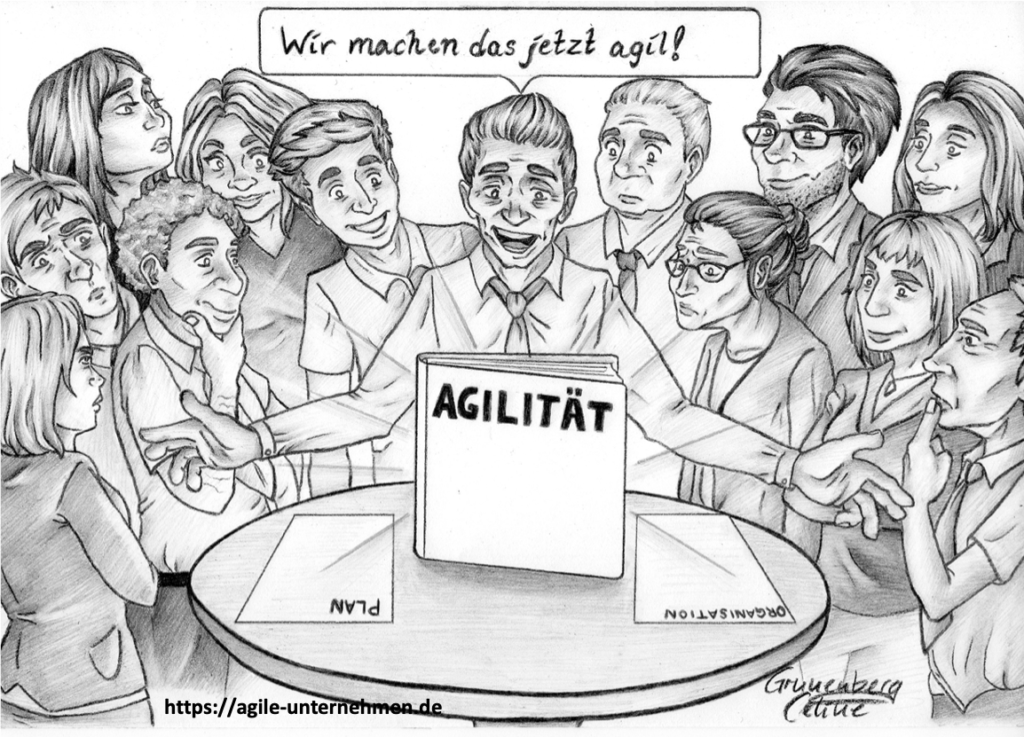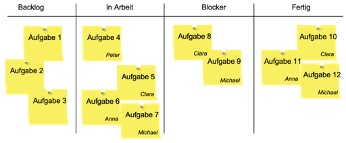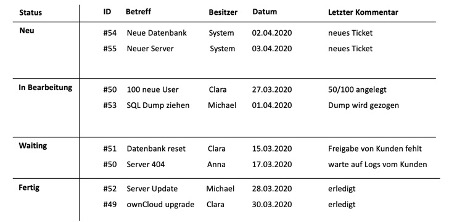While I was able to provide you with the necessary and suitable (software) tools beforehand, the task now is to use them correctly. Because for a successful leadership you also need the right working methods for virtual teams.
In this article, I would like to explain in more detail what is important here and which factors play an essential role. All information reflects a Summary out Chapter 4 of my book Virtual teams and home office from Springer Verlag contrary.
Working methods for virtual teams
Virtual teams are particularly important in complex projects, as input from various expert groups is often required. Due to these circumstances, agile approaches are recommended here. Agility here means the characteristics of a company to react quickly, flexibly and, if possible, in real time to market changes. In this context, this primarily relates to specific processes and meeting formats. For perfect success, working methods for virtual teams should be characterized by strictly regulated processes and role allocation, which at the same time allow a controllable degree of flexibility. The main goal behind this should be to design working methods for virtual teams in such a way that employees can work on their own processes with the help of self-organization and freedom of action.
Still, agility should not be thought of as a panacea.

Instead, the introduction of agile methods usually means a good deal of hard work at first. After all, this demanding task requires good organizational and management talent. The employees must first be properly looked after and accompanied in the development of self-organization and finally be “let go” at the right time. As a leader, you have to find the right balance of control and trust and still be available as a moderator.
But: once agility has been properly integrated into a system, the measures often quickly bear fruit. After all, agile methods are characterized by visualized work and a transparent work flow (including a clear distribution of roles).
Agility simply explained using an example:
To give you a picture for better understanding, you can imagine agility like a cake at a party (see Fig. 2).

Transferred to the world of work, the cake symbolizes a customer’s ideas, which (like pieces of cake) can be divided into many small projects. You will see for yourself that there is little point in bringing all of the pieces of cake (or projects) to one person. Instead, you will cut the cake into larger pieces (formulated requirements – so-called stories). Since these work packages (or pieces of cake) are still too big, you will divide them again into (bite-sized) pieces (individual tasks). You set up a kind of buffet for your employees, which you can help yourself to at any time. The individual tasks are processed one after the other until the cake is completely distributed (or the project is finished).
Team based work
But agile work can also be visualized in the real world. Methods such as Scrum or Kanban use graphic boards as information nodes.
However, this can also be implemented within working methods for virtual teams. Various software tools can be used, for example, to clearly control who does which task at what point in time and how exactly these tasks are defined (see Fig. 3).

Process based tools
However, boards cannot be used for all areas of responsibility. In the classic context in particular, tasks cannot always be planned proactively, but events (e.g. customer inquiries) must be responded to quickly. Ticket systems in particular are often very helpful here (see Fig. 4).

The process of such a system is very simple:
A task is triggered by an event and assigned to a system user as a ticket. As a leader, you can then distribute the tickets according to the areas of responsibility or specifications of your team. You can use the history to track the history of a ticket at any time and thus keep an overview of the status, the processing person and the existing obstacles. If such a system is well managed, customer inquiries can be responded to quickly and professionally.
Meeting formats
In order for tools like the ones mentioned above to work properly in connection with working methods for virtual teams, the right organization is required. This often also requires that the team meet at regular intervals. For virtual teams, these meetings can take place in the form of screen sharing, in which problems and ticket items can then be clearly discussed and clarified. 3 to 5 minutes should be set for each item and the discussion should include the following:
- specify new items,
- Importance and content of each item,
- Editor of an item and
- Fill in relevant fields such as status, keywords and check content.
There are basically different types of such meetings. I have listed those in my opinion that are particularly relevant for virtual teams for you.
Important meetings are
- Teamweekly : Here we talk about general company news and private topics. It is a weekly private get-together in the virtual room so that the team can socialize in a relaxed atmosphere. It takes 1h.
- Team consultation : Each team leader of a team is available for 30 minutes every week so that they can be contacted with feedback and process requests.
- 1 on 1 : I have a weekly 20 min. Discussion about his or her well-being (disciplinary leadership). I think this meeting is very important!
- My office hours: As a department head, I am available to every employee in the company once a week.
- Retrospectives : Once a month we check what went well and what went bad.
- Board meeting : Every 48 hours or once a week: We go through the board in 1 hour and check whether everything is entered correctly and celebrate successes! In the following, I will give more detailed explanations of the exact process.
Conclusion
Structure is the be-all and end-all of working methods for virtual teams. This way, you can avoid agility appearing complete and complex. Structure is characterized above all by the subdivision of large work packages into sub-tasks, which are then mapped within the software. In addition to the necessary clarity, they also ensure transparency and a dynamic target flow. You can ultimately maintain this dynamic through regular meetings.
Even if you often feel more like the administrator of a software than in a regular management position – believe me, I can assure you from my own experience that your influence is even more likely to grow. After all, you always have control over rights and processes and can also submit an up-to-date statement on every status of a task at any time. This not only looks professional, but also confident.
Tip: Read my new book: Virtual Teams & Home Office at Springer Gabler or book me for a talk.
Lindner, D. (2020) – Virtual Teams and Home Office – Guide to Technology, Working Methods and Leadership. Springer Verlag
[fotolia]


